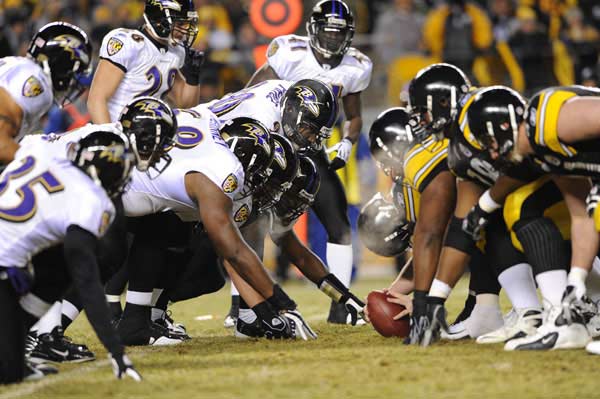Interactive Technology to Connect Sports Fans

Whether you are watching your favorite team play from your home, at the sports bar or among 50,000 screaming fans at the stadium, each environment will give you a different experience. Researchers at the University of Glasgow are working on ways to connect those three different environments of fans and customize the use of technology within each setting. "People watching at home don't feel part of the game, but have the advantage of being able to choose services such as viewing footage from different camera angles or even catching up on a different game," said project leader Matthew Chalmers. "We are exploring how to let people interact at a game, such as by sharing video clips, pictures, or even footage of their favorite goals using something like a Bluetooth network."
Chalmers and his team are partnering with Microsoft's Socio-Digital Systems research group in Cambridge and Arup, a global developer of sports venues including the Beijing National Stadium, to develop the "augmented stadium" which will combine the use of mobile technology with the fan experience. To understand how spectators interact with the game, the researchers will first observe and record fans, looking for opportunities where technology could enhance the experience. Combining sociology of sport concepts with crowd interaction research, the team hopes to discover the patterns of communication that may be possible. Designing for "crowd-centric computing" includes not only the experience of each fan, but also the experience of the crowd as a whole. Fan to fan, fan to crowd and fan to team communications could all be enhanced with the right technology.
In addition to crowd interaction, the connection to friends not at the stadium is also part of the design.
"We are thinking of supporting the 'man down' scenario where a member of a social group can't make it to a big match," Chalmers told LiveScience. "He/she might be watching the same match at the pub or at home, or may just be unable to watch it at all... but in either case still wanting to keep in touch with the banter of his/her friends." Applications like Major League Baseball's At Bat 2009, an iPhone/iPod app that will include in-game video and audio along with updated stats, scores and news, are the first step towards live interactive information.
Chalmers considers those applications as complementary to his research. "I see them as 'more of the same' in that they are examples of the traditional norm of 'official' content providers distributing their information their way. That's fine, and I'm glad if that information is made available in a mobile way," he said. "The crowd interaction features are the difference." In an interview with The Scotsman, Stuart Reeves, another researcher on the Glasgow team, explained: "The idea is to give some power back to sports fans, so they can share information and make their own record and analysis of matches and get more out of the experience. We will then use this information to design data-sharing applications which enable photo-sharing and blogging in real time, using Wi-Fi, GPS and 3G technology." Of course, trying to connect thousands of mobile device users in a small geographic space, like a stadium, presents a technical challenge. While some of the team's prototype applications have relied on 3G or Wi-Fi technology, Chalmers is also considering the concept of mobile ad-hoc networks, or MANETs.
These networks rely on each wireless device to be a receiver and a router, so that a network can be instantly built between devices without the support of a central infrastructure. "This will allow fans to make use of their own commodity phones to have a kind of independent communication infrastructure to do their own thing on -- and avoid many of the problems of limited bandwidth provided locally and commercially," Chalmers said. "They can use that infrastructure in the stadium, but also have it with them outside of the event in the pub/street/wherever." Dan Peterson writes about sports science at his site Sports Are 80 Percent Mental.
Get the world’s most fascinating discoveries delivered straight to your inbox.


